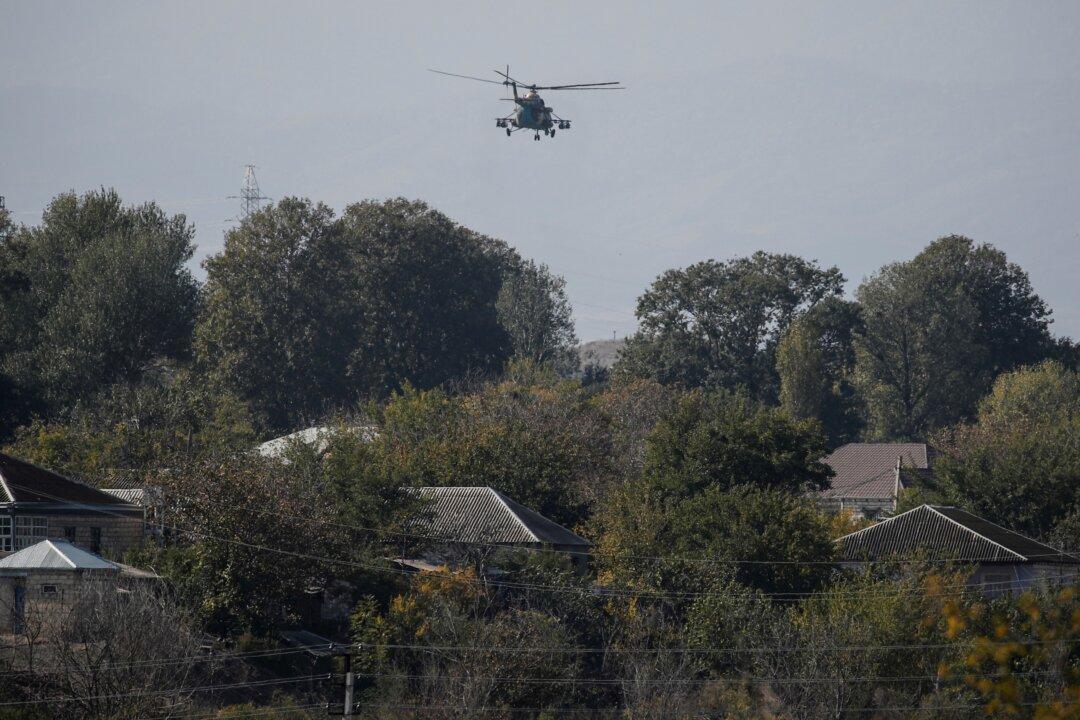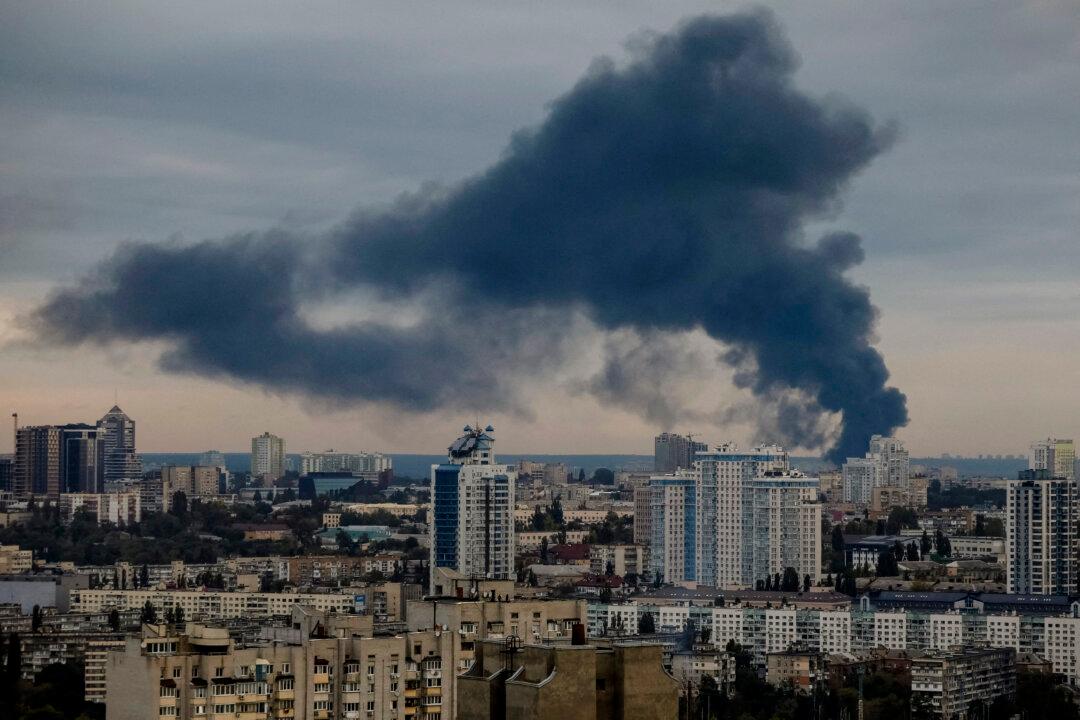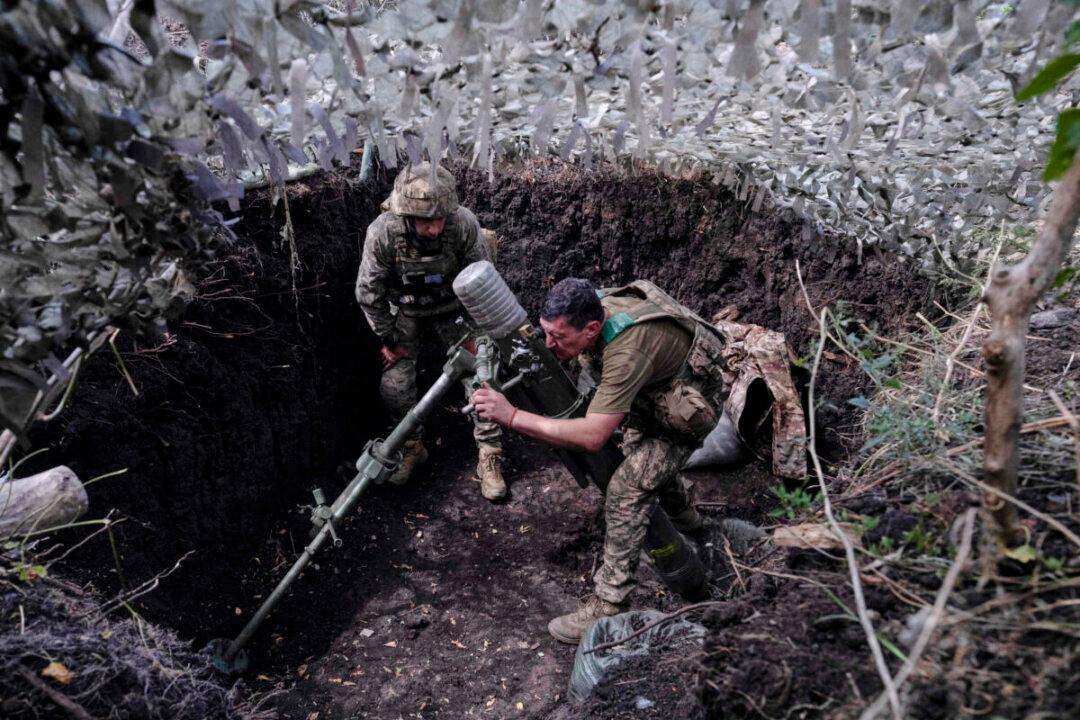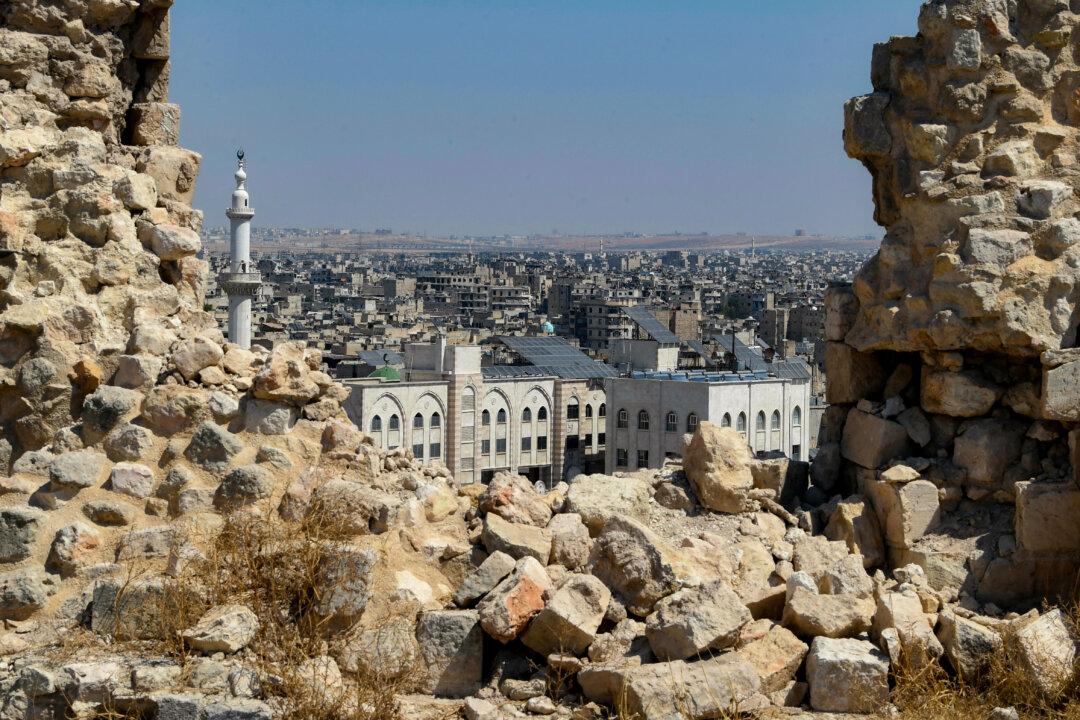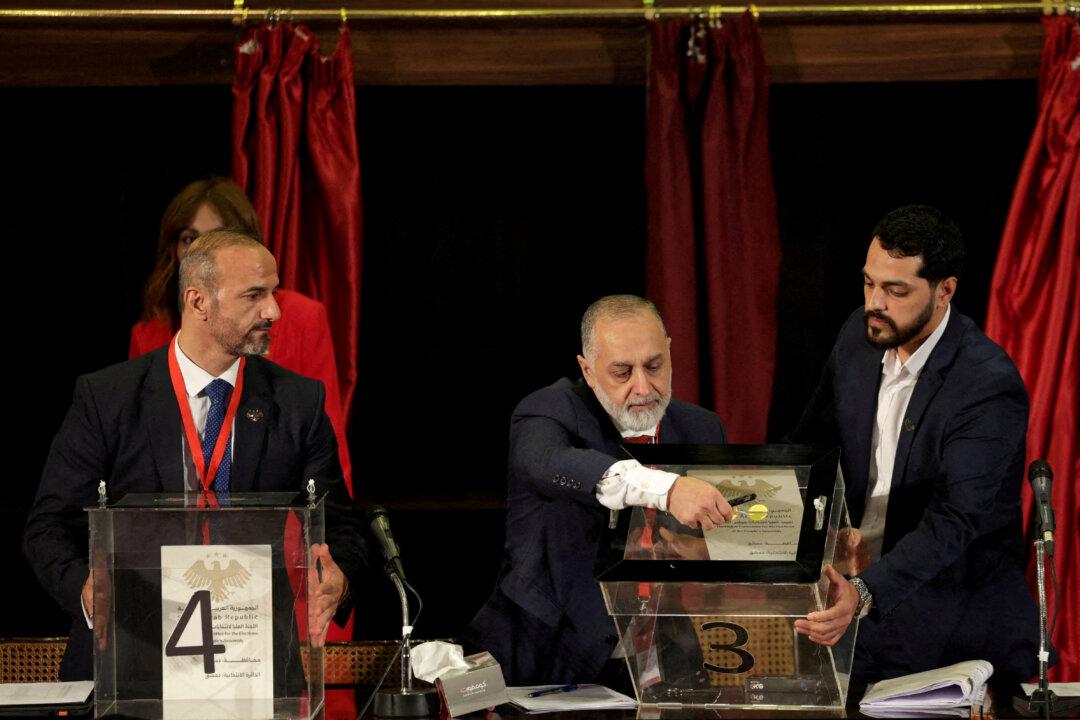Azerbaijan has suspended a planned ground offensive into the flashpoint Nagorno-Karabakh region after Armenian separatist forces agreed to the terms of a ceasefire agreement brokered by Moscow.
“The authorities of the Republic of Artsakh accept the proposal of the command of the Russian peacekeeping contingent to cease fire,” a spokesperson for the “republic,” which isn’t internationally recognized, said in a statement.
